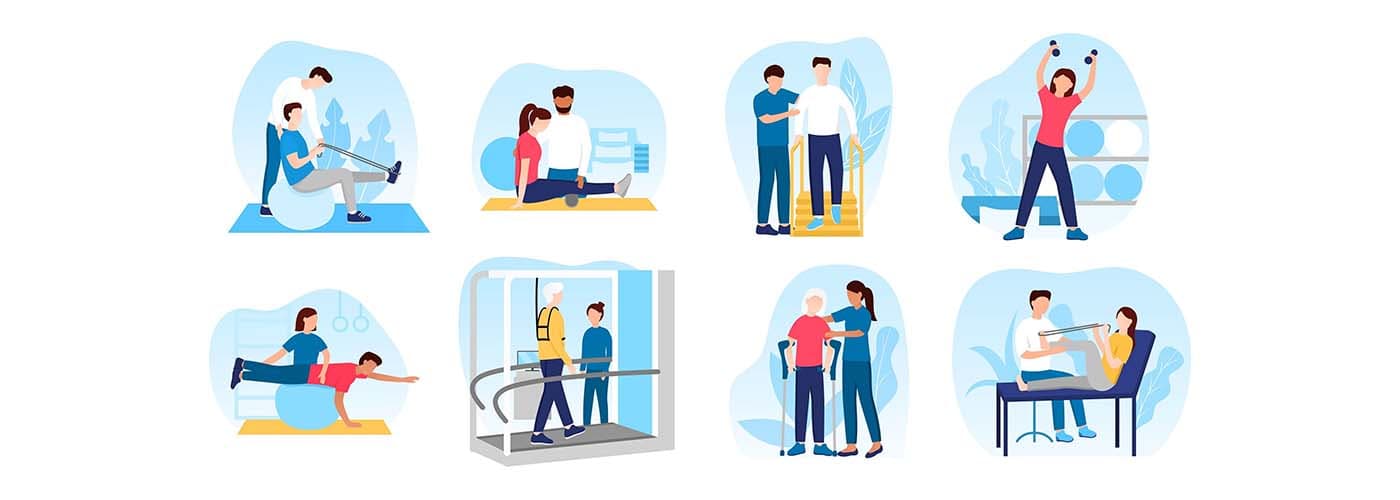
Types of Therapy for People with Disabilities
Caring for individuals with disabilities requires understanding the various therapy options that can enhance their quality of life. Physical therapy, occupational therapy, and speech therapy are the most common types of therapy, each addressing different aspects of an individual's overall well-being. Caregivers often face the challenge of determining which therapy or combination of therapies will best support the person they care for. Understanding each type is critical creating a plan of care
What Is the Difference between OT, PT, and Speech Therapy?
Some people utilize multiple therapies, while others may only need one or two. For example, a person who uses a wheelchair may benefit from physical or occupational therapy, but they may not need speech therapy.
- Physical Therapy (PT): This therapy helps improve mobility, strength, and coordination for people with mobility disabilities.
- Occupational Therapy (OT): This therapy focuses on helping individuals perform daily activities and adapting environments and tasks to accommodate disabilities.
- Speech Therapy: This type of therapy assists individuals who are non-verbal or have limited speech, as well as those with speech impairments and swallowing difficulties.
What Is Done in Speech Therapy?
Speech therapy helps individuals communicate, whether that communication is verbal or non-verbal. For example, a speech therapist may work with a non-verbal autistic child using picture communication boards or assistive technology like an AAC device, or they may work with adults who experience communication impacts from strokes. Speech therapy sessions may include:
- Articulation exercises: These exercises involve practicing correct pronunciation and clarity of speech.
- Language development: Speech therapists helping clients to enhance their vocabulary, sentence structure, and comprehension.
- Social communication skills: Therapists can work with clients to teach appropriate language use in social contexts.
- Fluency: Techniques are used to improve stuttering and the flow of speech.
- Swallowing therapy: Exercises are performed to strengthen swallowing muscles.
When Should You Consider Speech Therapy?
The Centers for Disease Control (CDC) state children should say about 50 words by 2.5 years old. If your child isn't meeting this milestone, you may want to consult a speech therapist or medical professional.
What’s the Difference between a Speech Therapist and a Speech Pathologist?
There is no difference between a speech therapist and a speech pathologist. "Speech therapist" is a term commonly used by the public, while "speech pathologist" or "speech-language pathologist (SLP)" is more commonly used among professionals.
What Is Occupational Therapy?
Occupational therapy increases independence in daily activities for people with disabilities with a focus on functional abilities.
What Does an Occupational Therapist Do?
Occupational therapists help improve strength and coordination, using adaptive techniques and assistive devices to compensate for physical limitations. They may assist patients with:
- Dressing independently
- Bathing independently
- Holding Writing Utensils
- Opening Doors
How Can an Occupational Therapist Help Someone with Mobility Issues?
The goal of occupational therapy is to foster independence by making daily activities more manageable. Occupational therapists may either recommend exercises to gain or maintain mobility, or suggest aids to complete tasks including:
- Dressing aids: These can include button hooks and long-handled shoehorns.
- Mobility aids: Examples include wheelchairs, walkers, canes, crutches, and braces.
- Eating and cooking aids: Kitchens and mealtime can be made accessible with adapted utensils and jar and can openers.
- Bathing and hygiene aids: Bathrooms can be equipped with grab bars, shower chairs, and long-handled sponges.
- Grabbers: These tools are used to pick up or reach items.
- Writing and computer aids: These can include specialized keyboards, writing grips, and speech-to-text software.
What Is the Purpose of Physical Therapy?
Physical therapy enhances mobility for individuals with disabilities and injuries. It benefits people of all ages, whether they have a permanent disability or a temporary injury.
What Is the Role of a Physical Therapist?
Physical therapists play a significant role in helping individuals manage chronic pain, recover from surgery, and rehabilitate after injuries, as well as support those with permanent disabilities. They guide patients through exercises aimed at improving strength, flexibility, and range of motion. Additionally, physical therapists use manual therapy techniques, such as massage and joint mobilization, to alleviate pain and improve mobility.
Who Benefits from Physical Therapy?
Anyone with a mobility impairment can benefit from physical therapy, including people with temporary injuries like broken limbs, those in rehabilitation post-surgery or injury, individuals with long-term or permanent disabilities, and older adults.
Interdisciplinary Approach to Therapy
Therapies for people with disabilities often involve multiple experts. For example, an orthopedic doctor may work with a physical therapist to determine and evaluate a treatment plan. Each medical professional’s expertise can positively impact patient outcomes, making an interdisciplinary approach ideal.
Does Occupational Therapy Help with Speech?
Occupational and speech therapists often collaborate to help people with disabilities achieve goals and maintain quality of life. While their treatment plans may coordinate, their expertise differs. OTs focus on activities of daily living, while speech therapists focus on communication.
How Do SLPs and PTs Work Together?
SLPs and PTs collaborate similarly to OTs. Their treatment goals may overlap, but their expertise differs: PTs focus on mobility, while SLPs focus on speech and communication.
Beyond therapy, many adaptive activities can benefit overall health and well-being. Read more about adaptive activities for people with disabilities in the related articles section below.




